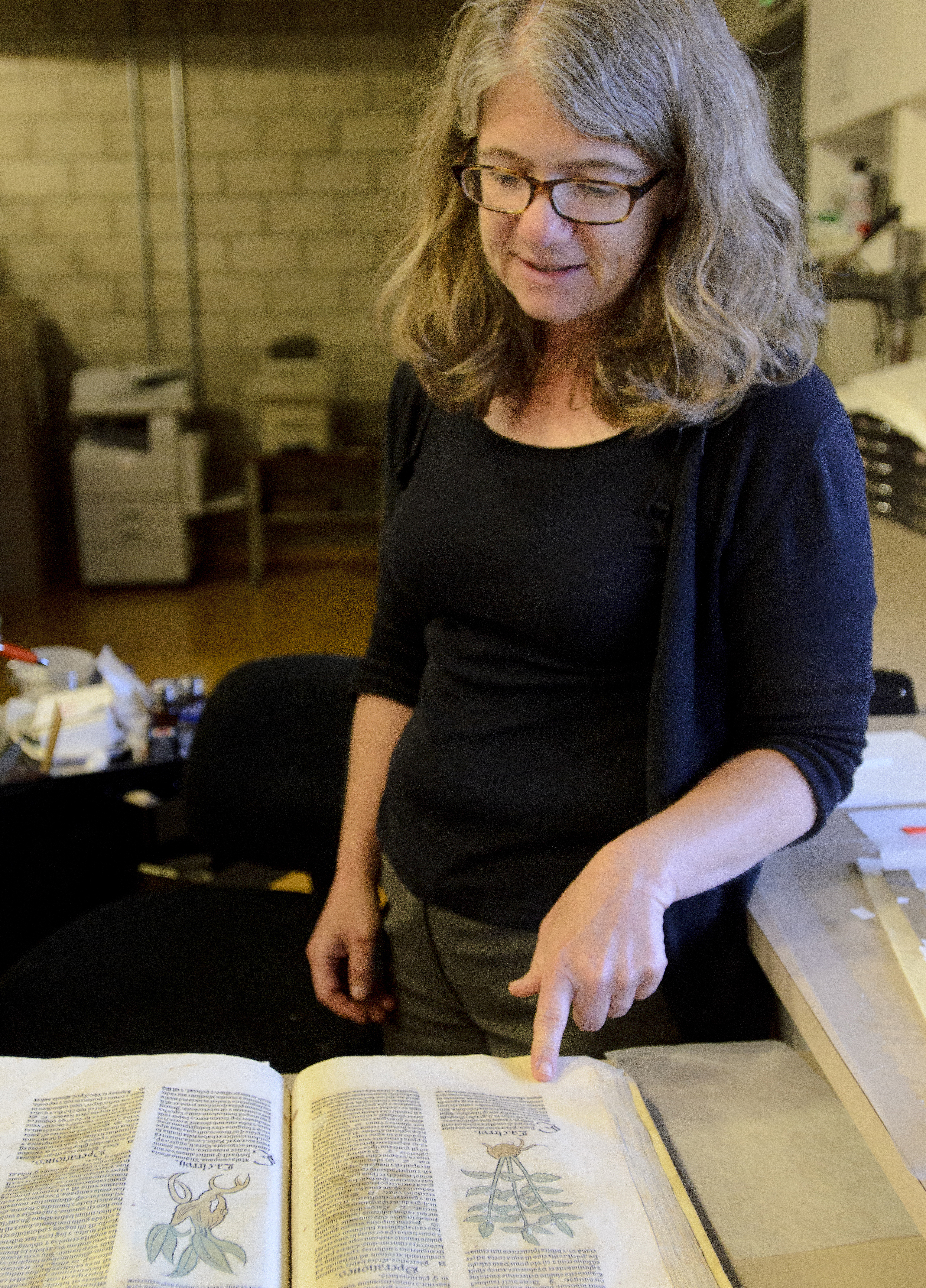The patients travel in green boxes from the shelves of the Charles E. Young Research Library to the Kinross Building in Westwood.
Past a gym and through the double doors on the right, they are greeted by the smell of familiar friends and capable hands.
These patients are damaged or at-risk books, and the UCLA Library Conservation Center is where they come for repair.
One of the lead women behind the operation is Kristen St. John, who has worked with the lab for eight years as the university’s first collections conservator, mending and preserving rare and damaged books.
For her, the choice to become a preservation specialist was a natural one.
“I always really liked old books, and I liked books not just to read but I was really interested in them as objects (and how they were made),” she said.
St. John and her team accept shipments from the UCLA Library system ““ mostly from Charles E. Young Research Library ““ each month in the green bins and assess the work that needs to be done.
The team also organizes and protects collections for future presentations. Physically repairing the effects of corrosive ink is common. In these cases, the specialists will reinforce the pulp the paper is comprised of.
Repairing books with brittle paper, however, is the biggest problem the workers at the lab face, St. John said.
“Pieces (of paper) fly out at you,” she said, picking up a book from 1825 filled with brittle paper no longer attached to the spine. She noted the distinctive smell with a sniff.
Post-it notes quicken degradation. Laughing at her serious disapproval of the office supply, St. John said she wished students would not use Post-it notes in their library books. And then she repeated it.
Delicately flipping through the pages of an illuminated book that depicts real and fictional creatures and plants, such as mandrakes, St. John comes across a handwritten note in the corner.
She will leave the note as is. It could be part of a study or reveal insight in the future, she said.
Not all books can be saved, though, St. John said.
When books are beyond repair, Dawn Aveline, a preservation specialist, takes over. Aveline and her work are part of the UCLA Library Preservation Program that includes the conservation center.
Aveline, who applied spontaneously to an internship position with the UCLA Library as a graduate student in information studies, ended up staying after she graduated. She said she considers herself lucky to have stumbled into working with the preservation program.
Her duty is to ship the books to the University of California Bindery in Berkeley for re-binding or to prepare them for disposal.
Walking down the halls outside her office toward the room where shipments to and from the bindery are organized, Aveline was asked what her favorite book was. In response she stopped walking, turned around, raised her eyebrows and said one word: “Really?”
That’s a difficult question.
The UC system is considered a library network, and the popularity of a book and its availability across the system are contributing factors for re-binding and preservation, said Sharon Farb, associate university librarian.
One UC Berkeley professor has created a sort of equation that tells libraries how many copies of each kind, digital and print, are needed in a system in order to ensure at least one complete copy remains in circulation over the effects of time, Farb said.
That way, no book is lost forever.
Even when something is digitized, the university makes an effort to retain at least one copy of the information in its print form.
“We will always keep the originals,” Aveline said of the digitized copies. “It’s not the same looking at a digital image.”
To prove her point, she opened a book with page-long fold-out maps of the world resting on her desk. Admiring the design of the book, she said the maps are not the same on a computer screen.
Accompanying the book are stacks of other books, many of which have been or will be digitized, and a stuffed, yellow bookworm.
After the books are repaired, they are sent back into circulation for further access, but some of the longer projects make an impression on the specialists.
Her favorite piece? That’s easy.
“You can see the history of repairs,” St. John said of an Armenian talisman scroll from 1608.
It measures 4 inches wide and 22 inches long.
People would roll the scroll up and wear it around their necks for protection. The scroll’s condition is a testament to how frequently it was used, St. John said.
